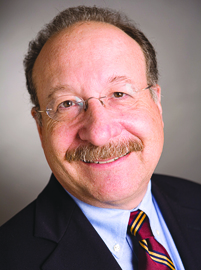Fed rate increase should help take risk out of financial markets

Editor Henry Dubroff
The Federal Reserve’s decision to slowly begin the process of normalizing interest rates may not have all that much to do with the economy or inflation.
The economy isn’t really overheated and any threat of inflation remains far off in the future. Parsing the Fedspeak of the Dec. 16 announcement that regulators are “reasonably confident” that inflation will return to 2 percent over the “medium term” shows just how tepid consumer price increases really are.
However, in my view, the unanimous decision to gradually raise the federal funds rate — telegraphing quarterly increases through 2016 — is a subtle admission that too much risk has creeped back into the financial markets.
Zero interest rates have motivated workers and retirees to take bigger and bigger risks with their hard earned savings. The risk-taking has been evident in the extreme volatility that’s hit the stock and bond markets recently.
Meanwhile, Wall Street’s penchant for relentless innovation that leads to reckless excess is an enduring X factor. In the absence of a normalized interest rate environment, it’s been tempting for people to look to all sorts of ways to cheat the system.
Here are three areas where risk seems to have gotten out of whack — and where the Fed’s action might be aimed at curbing market excesses.
• Exchange Traded Funds. Investors looking for higher returns have invested billions in ETFs believing they are plain vanilla investments that mirror stock and bond averages with the advantage of daily pricing. That’s not precisely true. The relationship between the funds and their underlying securities is far more tenuous than it is with mutual funds — especially when the underlying securities are not highly liquid.
The SEC in October launched a major effort to understand the risks of ETFs and, in early December, announced rules to try to rein in the use of derivatives to juice returns. Some experts are suggesting that price volatility makes it risky to trade ETFs in the first and last hours of a trading day.
It will take more than a bump or two in interest rates to take the risk out of ETFs but a return to more normal Fed operations will help regular folks make better choices.
• Junk bonds. The search for yield has triggered a flood of capital into riskier debt instruments by companies with less than an investment grade rating. Mining and energy company debts have been hit hard by the collapse in oil and gas prices and fears about slow demand from China. Weak retailers are vulnerable, too, if the Christmas season doesn’t pan out.
Raising short-term interest rates will cause distress for lower credit quality issuers but it may actually deflate the junk bond bubble before it can get to big.
• Penny stocks. Elderly people and unsophisticated investors are easy pickings for boiler room operators who promise high returns. Those returns can look very attractive to people earning literally nothing on their savings who are trying to make it on fixed incomes. As savings rates return to normal, the idea of buying stock in the next great thing will look less attractive.
Here’s wishing you, your family and your portfolio a happy and successful New Year.
• Reach Editor Henry Dubroff at [email protected].










